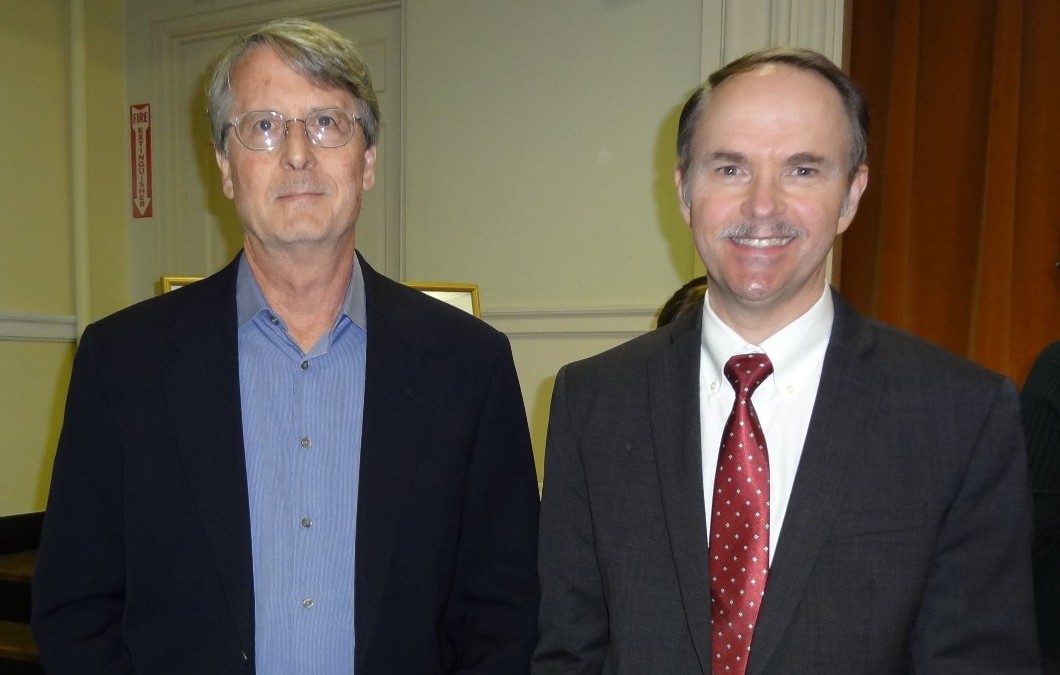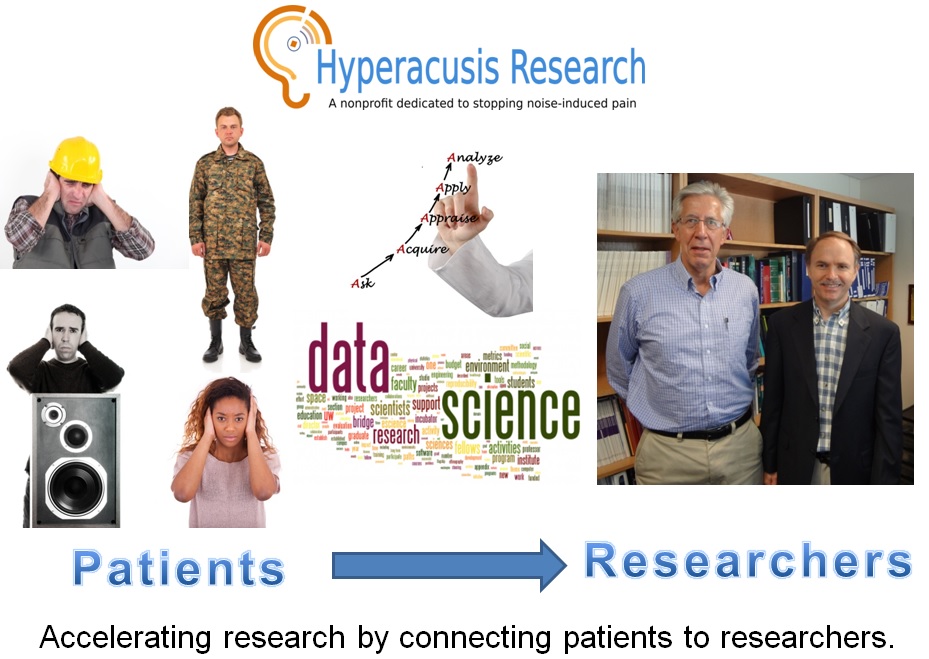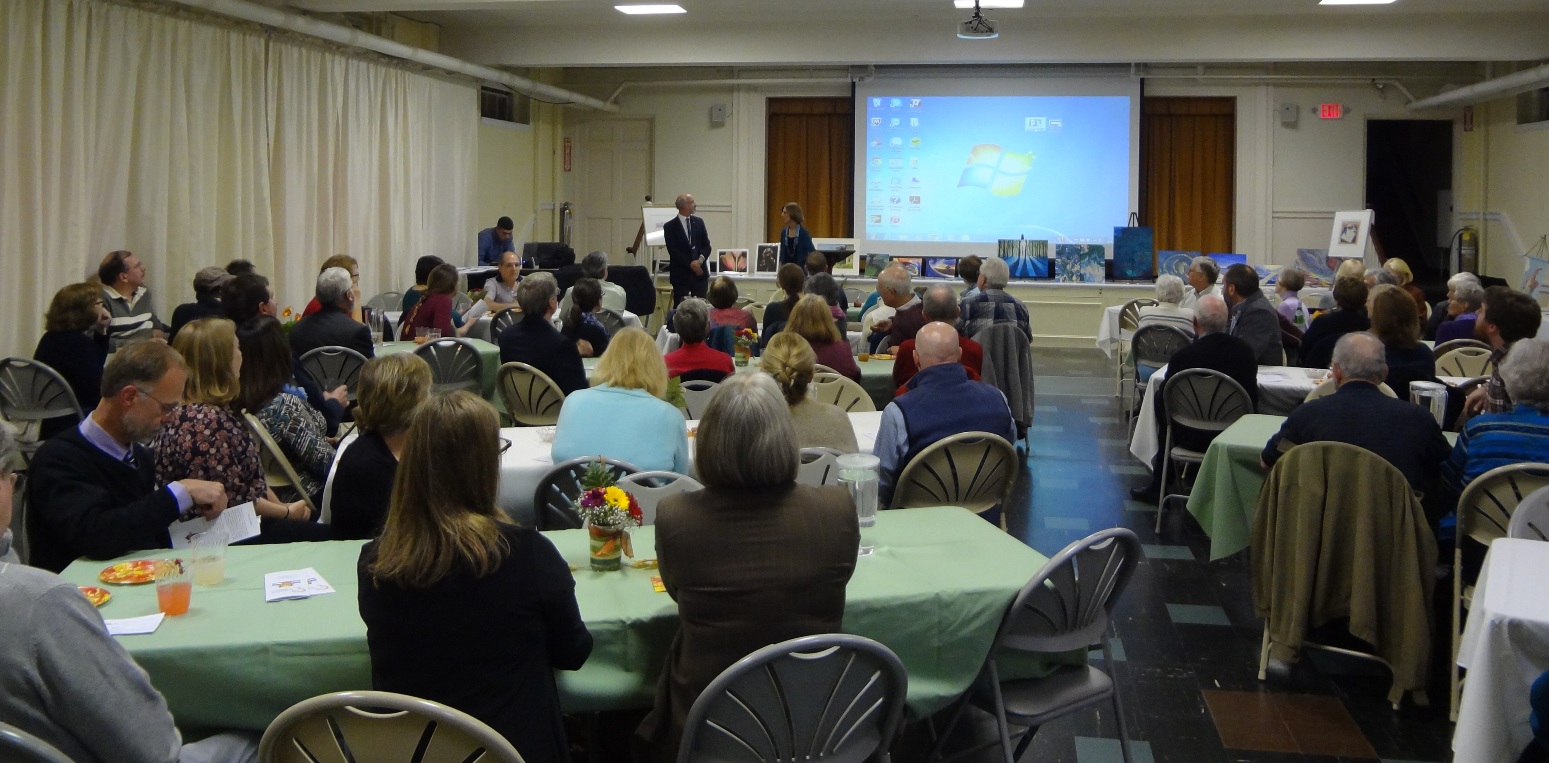Our Hyperacusis Research Boston-area fundraising dinner was a great success! We exceeded our goal to raise $20,000 for research (with more funds still coming in). After welcoming the 80 people who attended, the sponsors, Michael and Betsy Maholchic, showed a video from their son, who suffers from severe noise-induced hyperacusis caused by loud music and a job at a noisy restaurant. Pictured at top: Dr. Charles Liberman and Bryan Pollard.
Highlights included the following:
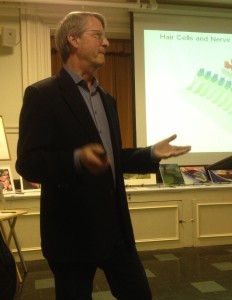 Dr. Charles Liberman, otology professor at Harvard Medical School, gave a brief overview of the auditory system and how sound waves are turned into neural signals by sensory fibers in the inner ear (cochlea). He explained how these sensory fibers in the inner ear can be damaged from loud sounds. Most importantly, Dr. Liberman described the cochlear pain fibers that are likely activated with hyperacusis and he reviewed the lab research that aims to fully understand what is going wrong with these fibers.
Dr. Charles Liberman, otology professor at Harvard Medical School, gave a brief overview of the auditory system and how sound waves are turned into neural signals by sensory fibers in the inner ear (cochlea). He explained how these sensory fibers in the inner ear can be damaged from loud sounds. Most importantly, Dr. Liberman described the cochlear pain fibers that are likely activated with hyperacusis and he reviewed the lab research that aims to fully understand what is going wrong with these fibers.
Hyperacusis Research president and founder Bryan Pollard noted that in a person’s life story, sometimes, there’s a dramatic event or turning point that changes a person’s life. For many with hyperacusis with pain, that defining event was the moment hyperacusis began. It starts a chapter in a person’s life that is difficult to get beyond due to the disabling affects of noise-induced pain. That’s why support and funding are critical — so we can work toward a cure that will allow people to progress to the next chapter in their lives.
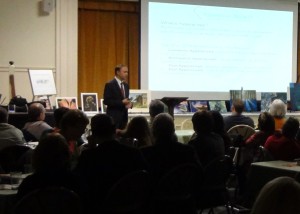 Every table at the dinner included a bowl of foam earplugs. Bryan demonstrated the correct way to insert them and reviewed the kinds of noise situations where they should be used. He also pointed out the drawbacks of earplugs — including the difficulty of communicating and of understanding speech while wearing them.
Every table at the dinner included a bowl of foam earplugs. Bryan demonstrated the correct way to insert them and reviewed the kinds of noise situations where they should be used. He also pointed out the drawbacks of earplugs — including the difficulty of communicating and of understanding speech while wearing them.
Bryan also provided a history of Hyperacusis Research and reviewed current projects. These include:
• Our upcoming ARO (Association for Research in Otolaryngology) symposium on auditory nociception and pain.
• Two grants for science researchers investigating the mechanisms of noise-induced pain, in partnership with the Hearing Health Foundation.
• A hyperacusis survey in conjunction with the Sanford Research rare diseases registry.
• A hybrid hyperacusis device that combines ear protection with broadband noise.
• Ongoing media efforts to spread awareness of hyperacusis.
• Ongoing fundraising efforts so we can accelerate our funding of research toward our goal of eradicating noise-induced pain.
Bryan also highlighted a vital function Hyperacusis Research provides by linking the reality of hyperacusis sufferers to the research community as shown in the diagram below.
We are extremely grateful the Maholchics who worked many hours to make this a successful benefit dinner and for their son who provided many paintings that were auctioned at the event! We again thank our generous supporters for their help with our efforts to eradicate noise-induced pain. People can still contribute by clicking the “Donate Now” button.

